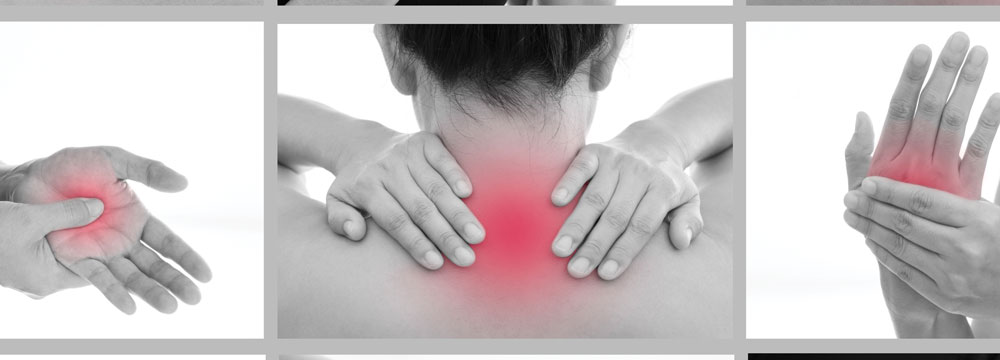
Safer, smarter care for chronic pain
To treat pain, avoid opioids and turn to nonopioid therapies that have shown benefit in specific pain types, including musculoskeletal and neuropathic pain.
Chronic pain is one of the most common reasons patients seek care, yet one of the hardest to manage. Even when rooted in clear pathology, persistent pain often defies a straightforward fix—leaving physicians to navigate treatment fatigue, patient frustration, and systemic barriers.
“You have to start with the premise that pain is not just biological, it's also psychological and social,” said Mark Bicket, MD, PhD, associate professor of anesthesiology and public health at the University of Michigan Medical School in Ann Arbor. “Pharmacological treatments are one way to approach the pain experience, but there's increasing recognition that nonpharmacological strategies are helpful and often have a much better benefit-to-risk ratio.”
Current guidelines emphasize the need for a multipronged approach employing nonpharmacologic and nonopioid strategies. But implementation of such recommendations is inconsistent, in part because access to treatments like physical therapy, cognitive behavioral therapy (CBT), or chiropractic care can be limited by coverage or availability.
“Opioids shouldn't be first line for chronic low back pain,” said Lori Bastian, MD, MPH, professor of medicine at Yale School of Medicine and associate chief of staff for research at VA Connecticut Healthcare System in West Haven, Conn. “But in a busy practice, writing a prescription is often the easiest, cheapest option, even though nonpharmacologic care can be a more effective and safer long-term path.”
What to use when
Physicians and patients appear to be largely following current recommendations to try available nonopioid medications before opioids. Across a nationally representative sample, just over 30% of adults with chronic pain reported using prescription nonopioids—significantly more than those using opioids (13.5%), according to a 2023 study published in Annals of Internal Medicine.
The most recent CDC guidance, issued in 2022, advises maximizing nonopioid and nonpharmacologic strategies first, said Dr. Bicket, who gave a presentation on pain management at Internal Medicine Meeting 2025.
Nonopioid therapies such as NSAIDs, serotonin-norepinephrine reuptake inhibitors (SNRIs) like duloxetine, and certain anticonvulsants have shown benefit in specific pain types, including musculoskeletal and neuropathic pain, he said. Muscle relaxants may help in certain cases, such as trigeminal neuralgia or muscle spasm, but have little to no benefit when studied in patients with fibromyalgia, low back pain, or osteoarthritis.
Opioids are no longer considered first-, second-, or even third-line therapy for chronic pain in opioid-naive patients. The CDC recommendations highlight the risk of dependence, tolerance, and adverse events and urge physicians to monitor patients closely when opioids are used.
“Opioids should be salvage therapy,” said Leah Leisch, MD, a general internal medicine physician and head of addiction medicine at the University of Alabama at Birmingham. “We try them in desperate situations, but in general they shouldn't be something we reach for early on.”
Even for patients already on opioids, experts urge careful consideration of their risks and benefits, with an emphasis on individualized care and regular reassessment versus abrupt changes.
“If it's helping to improve daily function and mobility, and patients are not constantly focused on their pain, it may be reasonable to continue,” said Sandra Sacks, MD, MEd, associate program director of the pain fellowship and a specialist in cancer pain at UCLA Health in Los Angeles. “But each situation should be assessed on a case-by-case basis. There are often opportunities to try tapering, to see what the patient actually needs.”
Tapering should be a deliberate, patient-centered process, not a reflexive response to guideline changes, said Dr. Leisch. “It's not about changing things for the sake of change,” she said. “But when the risks start to outweigh the benefits, that's when you reassess.”
When tapering is appropriate, a slow, collaborative approach is key, and most experts recommend reducing doses by 10% to 20% every two to four weeks, with pauses as needed. According to one study, published April 22 by the Journal of General Internal Medicine, more rapid tapering (>40% monthly dose reduction) can significantly increase the risk of overdose, opioid use disorder, and mortality in patients older than age 65 years.
“I always tell patients, ‘Let's try reducing a bit and see how you feel,’” said Dr. Sacks. “‘If your quality of life dips, we can adjust.’ But many patients are surprised to find they can function just as well on less.”
Nondrug alternatives
Nonpharmacologic strategies remain underused despite strong evidence for certain modalities, according to the 2023 Annals study. In a national survey, exercise was the most common approach to chronic pain among U.S. adults (55%), followed by complementary therapies like massage, yoga, and relaxation techniques. However, CBT—a guideline-recommended treatment—was reported by just 2.6% of patients.
“CBT has a stronger evidence base for chronic pain than a lot of what's being prescribed,” said Dr. Leisch. “But many Medicaid plans either don't cover it or charge a higher copay than they do for opioids. … It creates a system where fourth-line therapies are easier to get than first-line ones.”
Coverage is only part of the challenge. Some patients view nondrug options as less “real” and may be skeptical of approaches that require effort, lifestyle changes, or time.
“It's easier to take a pill than go to see a chiropractor and then follow the chiropractor's advice in terms of exercise,” said Dr. Bastian. “Sometimes it's hard for patients to get to that next place where they take control.”
Chiropractic care has gained stronger support as a viable first-line treatment, particularly for chronic low back pain. A study of more than 128,000 U.S. veterans, published in the Journal of General Internal Medicine on May 20, found that primary care patients who were referred to chiropractic care had significantly lower odds of receiving an opioid prescription in the following months, compared to those who weren't referred.
“If a primary care provider refers someone to chiropractic care and they actually go, they're much less likely to be prescribed opioids,” said Dr. Bastian, a coauthor on the study. “That's a big deal when you're trying to minimize unnecessary opioid use.”
Physician empathy also plays an important role in patients' acceptance of recommended therapies, noted Dr. Bicket. A 2024 study published in JAMA Network Open found that patients who rated their physicians highly on skills like listening and collaborating had lower pain scores and higher quality of life at 12 months.
“If you explain clearly, make a plan, and really listen to the patient, that in itself is therapeutic,” he said.
Physicians may also need to push back gently on popular but unproven strategies. Cannabis use for pain is rising, and nearly half of all registered medical cannabis users report chronic pain as their qualifying condition, according to a 2024 study in JAMA Network Open. But evidence supporting it remains limited outside of specific diagnoses like multiple sclerosis or spinal cord injury.
“For general chronic pain, cannabinoids show only a small, clinically insignificant effect—certainly less than exercise or CBT,” said Dr. Leisch. “And what's being sold at gas stations isn't the marijuana studied in trials. Those products should never be recommended by physicians.” (See sidebar for a summary of ACP's best practice advice on cannabis and cannabinoids for management of chronic noncancer pain.)
Patients may also bring unusual ideas gleaned from social media or wellness influencers, noted Amber Keller Brooks, MD, MS, an anesthesiologist and pain management specialist at Wake Forest University School of Medicine in Winston-Salem, N.C.
“I think it's a good sign that they're engaged,” she said. “But it's important to reframe the conversation around strategies that are evidence-based and address not just pain, but its impact on function, mood, and social connection.”
Keeping care patient-centered
Truly patient-centered care requires more than offering a proven treatment. It's about engaging with each individual's goals, fears, and lived experience, experts said. For patients with chronic pain, that often means slowing down, asking better questions, and shifting the conversation from pain relief to life enhancement.
“I really believe in treating people as their individual selves, with all the complexities that chronic pain brings,” said Dr. Brooks. “That includes their cultural background, social factors, and even how they define success in care.”
Communication and clinical consistency are essential to avoid care being affected by gender bias and other forms of inequity, research suggests. In one study, published last year in Proceedings of the National Academies of Sciences, clinicians were more likely to recommend pain medications for male patients and psychological interventions for women—even when viewing the same pain behaviors.
“There is a huge health disparity when it comes to treating patients' pain,” said Dr. Sacks. “It's really unfortunate—some of my patients are refused the same medications at the pharmacy based on their age, race, or gender.”
Consistency and transparency are critical strategies for combating the risk of bias in care. “I use the same documentation, the same forms, the same questions for every patient,” Dr. Sacks said. “That way, I'm not unconsciously giving someone more attention or skepticism based on race, gender, or age.”
Effective pain care also demands trust, which takes time, added Dr. Brooks.
“We are relying heavily on self-report,” she said. “That means the quality of the communication matters deeply. Patients who feel heard and safe are more likely to stick with a plan and tell us when it's not working.”
Pivoting, setting expectations
For patients with pain that remains refractory to all these efforts, a change in approach may be needed.
“I try to think about it like any other chronic, incurable condition,” Dr. Leisch said. “We may not be able to fix the pain, but we can promise patients they won't have to go through it alone. That matters more than we sometimes realize.”
Patient expectations should be revisited regularly, said Dr. Sacks, who recommends reassessing pain plans at least every three months. “Ask what their functional goals are,” she said. “Are they trying to walk a mile, get through work, sleep through the night? That tells you a lot more than just the pain scale does.”
When pain is escalating or nothing is helping, timely referral to a pain specialist is appropriate—even if the patient hasn't specifically asked for that.
“Sometimes primary care doctors wait until the patient is totally discouraged,” said Dr. Sacks. “But it can be incredibly helpful to loop us in earlier, before the patient gives up on all their options.”
Helping patients understand the course of chronic pain treatment is as critical as choosing the right therapies.
“Pain that took years to develop isn't going to disappear in days or weeks,” said Dr. Brooks. “We have to normalize that it's a process, not a single fix.”
Many nonpharmacologic therapies, such as CBT or SNRIs, may take several weeks to show meaningful impact, so helping patients track progress through function-based goals rather than pain scores can reinforce that treatment is working even if the patient still has pain.
“I often tell patients that we're aiming to make your life bigger than your pain,” said Dr. Brooks, “not to pretend it doesn't exist.”




